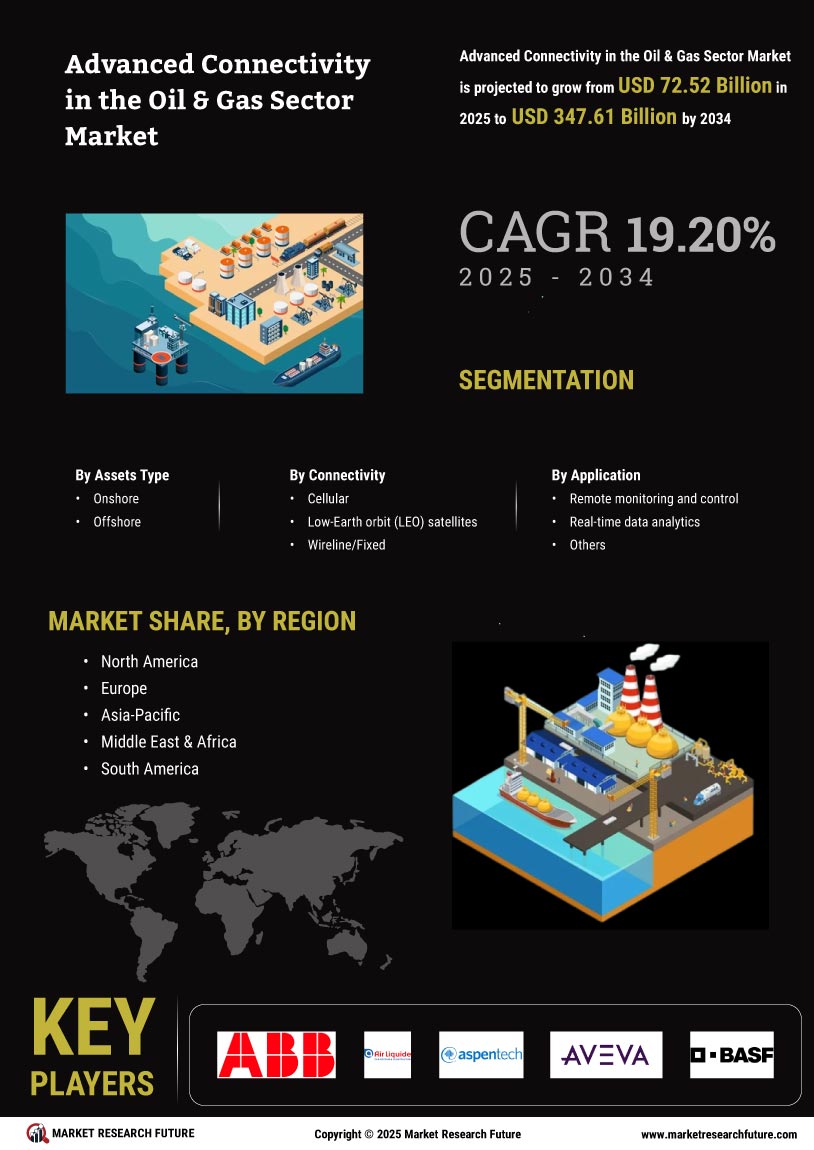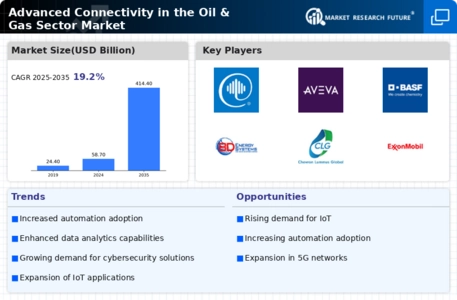Cloud Computing Adoption
The adoption of cloud computing technologies is transforming the Advanced Connectivity in the Oil & Gas Sector Market. By leveraging cloud platforms, companies can store and analyze vast amounts of data generated from various operations, leading to improved insights and operational agility. According to recent estimates, the cloud computing market in the oil and gas sector is projected to grow at a compound annual growth rate of 15% over the next five years. This growth is attributed to the need for scalable solutions that can handle fluctuating data loads and enhance collaboration among teams across different locations. As organizations migrate to cloud-based systems, the demand for advanced connectivity solutions will likely increase, further propelling market dynamics.
Focus on Cybersecurity Measures
The focus on cybersecurity measures is a critical driver in the Advanced Connectivity in the Oil & Gas Sector Market. As the sector becomes more interconnected, the risk of cyber threats increases, necessitating robust security protocols. Companies are investing heavily in cybersecurity solutions to protect sensitive data and ensure operational continuity. The Advanced Connectivity in the Oil & Gas Sector in the oil and gas sector is expected to reach approximately 30 billion dollars by 2026, reflecting the urgency of addressing these threats. This heightened focus on cybersecurity not only safeguards assets but also enhances trust among stakeholders, thereby driving the demand for advanced connectivity solutions that incorporate security features.
Regulatory Compliance and Standards
Regulatory compliance and standards are significant drivers in the Advanced Connectivity in the Oil & Gas Sector Market. Governments and regulatory bodies are increasingly mandating the adoption of advanced technologies to ensure safety, environmental protection, and operational efficiency. Compliance with these regulations often requires the implementation of advanced connectivity solutions that can facilitate real-time monitoring and reporting. For instance, regulations related to emissions monitoring necessitate the use of connected devices that can provide accurate data. As companies strive to meet these regulatory requirements, the demand for advanced connectivity infrastructure is likely to grow, influencing market trends.
Enhanced Data Analytics Capabilities
Enhanced data analytics capabilities are becoming increasingly crucial in the Advanced Connectivity in the Oil & Gas Sector Market. The ability to analyze large datasets in real-time allows companies to make informed decisions that can lead to increased efficiency and reduced operational costs. Advanced analytics tools can identify patterns and trends that may not be immediately apparent, enabling proactive measures to be taken. For example, companies utilizing advanced analytics have reported up to a 15% increase in production efficiency. As the industry continues to embrace data-driven strategies, the need for robust connectivity solutions to support these analytics will likely drive market growth.
Integration of Advanced IoT Solutions
The integration of advanced Internet of Things (IoT) solutions is a pivotal driver in the Advanced Connectivity in the Oil & Gas Sector Market. IoT technologies facilitate real-time data collection and analysis, enhancing operational efficiency and decision-making processes. For instance, the implementation of IoT sensors in drilling operations can lead to a reduction in downtime by up to 20%, thereby optimizing resource allocation. Furthermore, the ability to monitor equipment health remotely allows for predictive maintenance, which can save companies significant costs associated with unplanned outages. As the industry increasingly adopts IoT solutions, the demand for advanced connectivity infrastructure is likely to surge, driving market growth.


















Leave a Comment